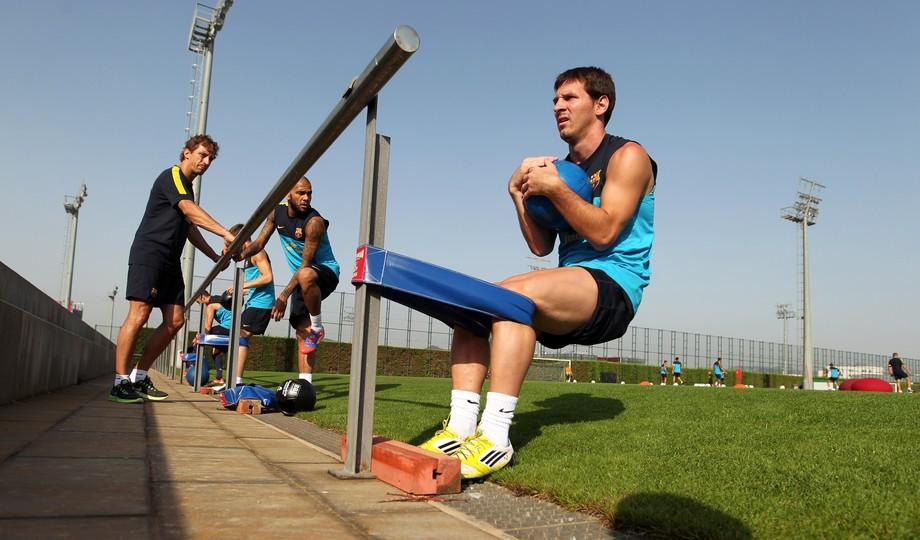NEW APPROACH TO TREATING A DAMAGED TENDON

Tid Bits of Info
- Tendons attach muscles to bone and help to control the movement.
- Tendons are made up of collagen which has a consistency like leather.
- Tendons handle tremendous loads but can be damaged with repetitive stress.
- Tendons can take up to one year to heal.
- Physical Therapists can prescribe the proper exercise routine for your injured tendon.
Tendon damage (tendinopathy) is painful and limits functional capacity. Both athletes and non-athletes can suffer from tendinopathy and often as a result of an “over-use” injury. Repetitive motion over time can cause stress and strain too great for the tendon to handle, resulting in microdamage within the tendon fibers. Physical Therapists guide patients through the recovery process with a variety of focused exercises, reminding patients that healing takes time.
Tendons attach the muscle to the bone. The tendon is made up of almost all collagen which is characterized by having very little elastic property or stretch capability. The tendon/collagen can withstand a tremendous amount tensile loading, but “overload” of the collagen can cause damage. If over-use occurs, the increased stress can cause tissue (collagen) damage and eventually failure of certain fibers. This failure occurs in the form of microtrauma and tearing of the fibers. If the activity that caused the over-use to occur is not modified or stopped, the tissue damage progresses and macro-trauma of the fibers can lead to tendon failure.
During the breakdown process, the tendon attempts to “heal” itself with increased cell production. The thickening of the existing and new fibers can lead to a disorganization of the collagen matrix which has been labeled tendon disrepair. In some instances, this disrepair is irreversible, but new theories of treatment for these conditions are very promising and producing great results.
For years, healthcare professionals have treated these conditions with a slew of modalities to control pain and reduce inflammation when someone presented to them with a tendon injury. Recently, it has been shown that many tendinopathy conditions do not have an active inflammatory process within the damaged tissue. The painful response occurs due to an influx of cells which are needed for the healing to commence an additional fluid accumulation in the area. If the tendon is used to transmit forces from the muscle to the bone be it a compressive force or stretch the tendon will produce a painful response.
The only way the tendon will heal properly is to apply the correct amount of force through it to stimulate the influx of cells and proper organization of those new cells. Initial treatment should focus on resting the tendon and reducing the repetitive forces that have produced the problem. The tendon should remain relaxed and not put under excess stress until there is no pain at rest and tolerable pain levels when the muscle/tendon complex is engaged for low-level activities and activities of daily living. When tolerated, the patient/client should begin to load the tendon with extra resistance to stimulate a thickening and healing response in the tendon. The exercises will help to organize the cell development and put the collagen architecture into a design that resembles uninjured collagen tissue.

The healthcare professionals who treat these conditions have traditionally used several types of exercise promote healing and strength development in the tendon. Isometric contractions, muscle generates force but does not move, has been shown to produce an analgesic effect within the muscle/joint. These contractions can be used in the beginning of a treatment session to enable the injured person to perform other exercises secondary to a reduced amount of pain.
In the past healthcare professionals attempted to load the damaged tendon with eccentric forces. During this type of loading, the muscle/tendon complex can resist a great deal of force while the muscle cells are elongating. The force generated in the muscle/tendon complex during this type of muscle contraction can be extraordinary.
Recently some studies have utilized a type of exercise that is referred to as heavy, slow resistance training (HSRT). The results of these studies indicate that strength training with high resistance, very slow motions can be as effective as eccentric loading.
Using a combination of the two types of exercise to achieve the goal of pain-free and strong makes a lot of sense. Clinically, any resistance exercise can help to “load” the tendon and stimulate healing and strength development. The recent studies indicate that both eccentric and concentric contractions can help to realign the fibers and make the repair a strong tendon that is less susceptible to re-injury. More studies have to be performed to determine if performing both types of exercise will speed up the healing process.
Tendinopathy is one of the most common injuries of athletes and non-athletes. The healing time is lengthy and the injured person’s expectations must be managed from the very beginning. The injured person must be informed that their injury will most likely take several months to heal and trying to rush the process can impede or stop the healing process. The injured person must work hard and consistently but remain very patient with their “comeback”.

























I really enjoyed how this blog was able to synthesize the research currently available on how to treat tendinopathy. I think one of the more common misconceptions that the public has about injuries is that rest will essentially cure the injury. I think that this blog did a good job of mentioning that rest is good early on to help calm the pain down. However, I think the best thing about the article was its focus on importance of introducing and gradually increased the load placed on the tendon.